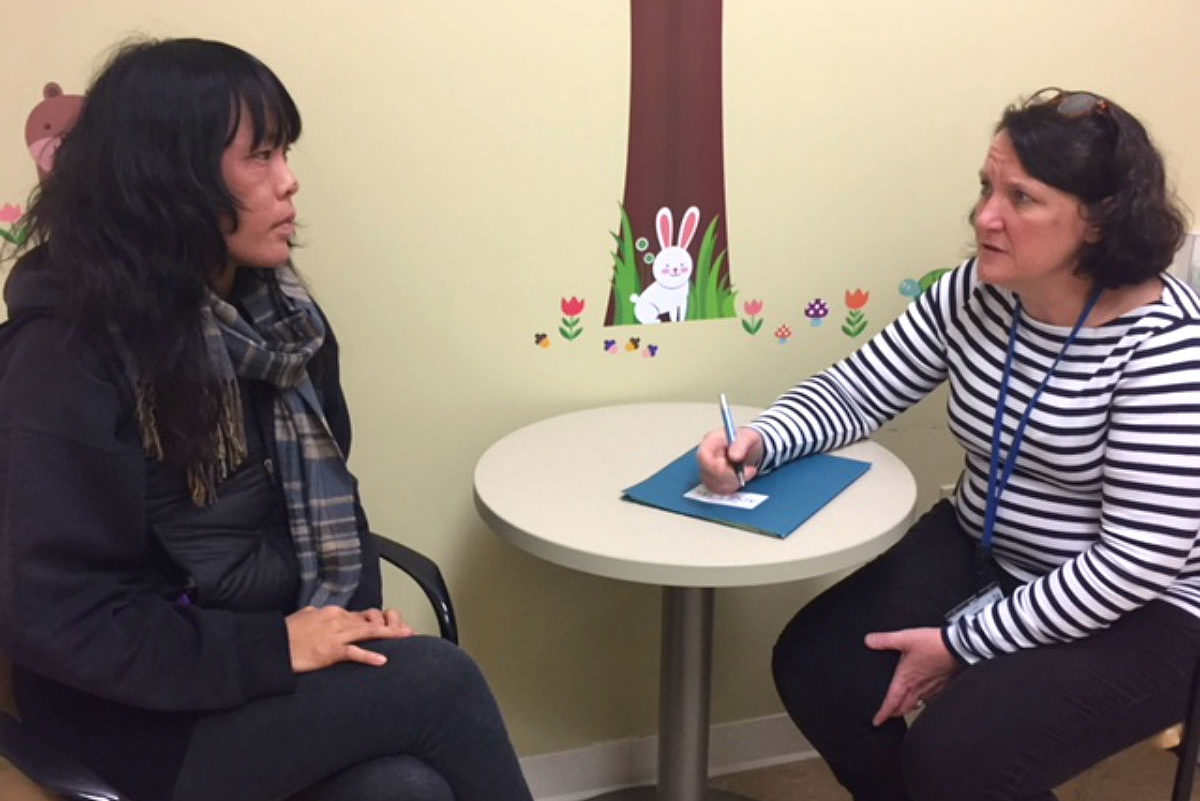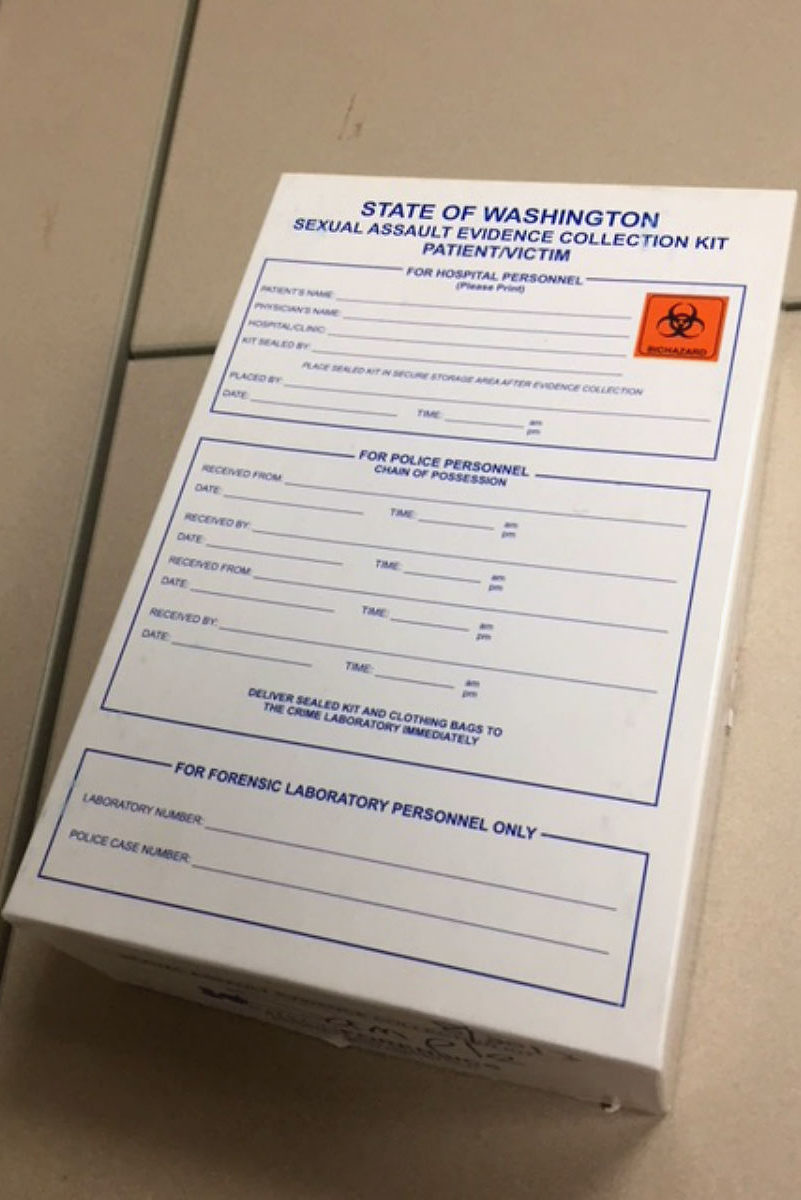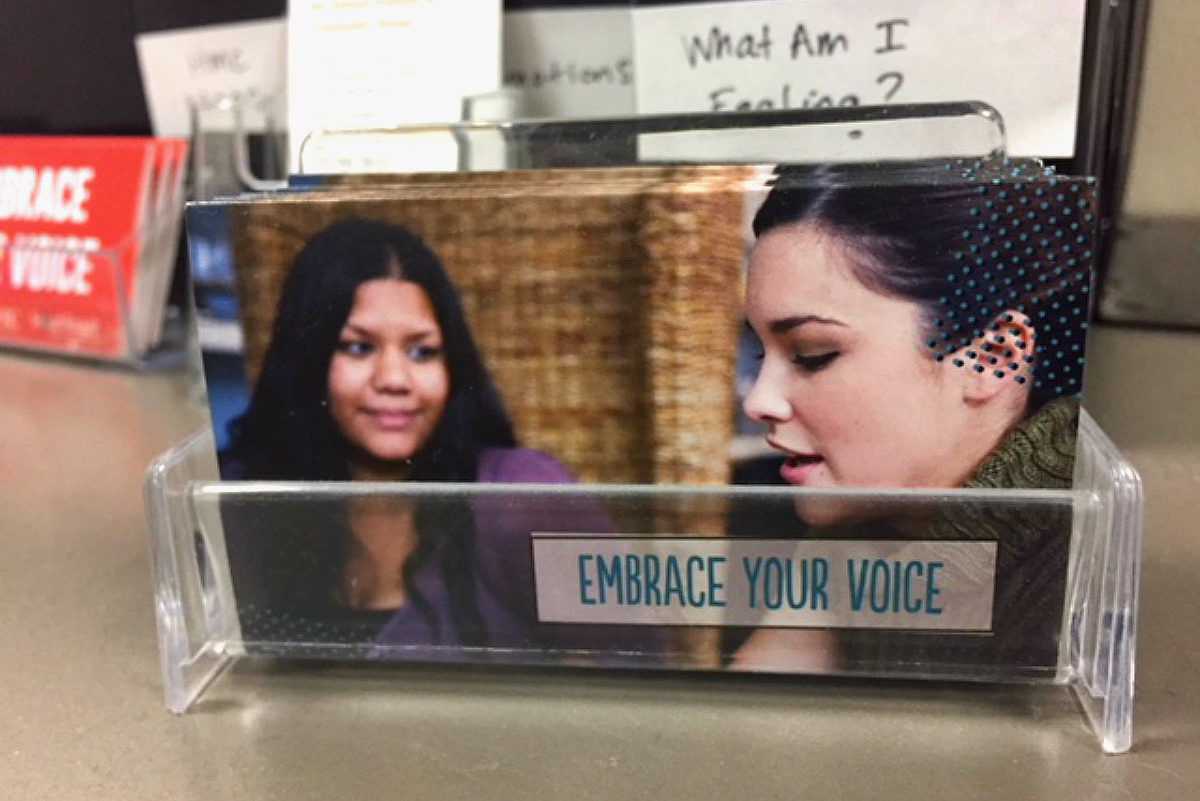
The inside of a rape exam room looks like any other doctor’s office — from the cartoon wall appliques to the small mountain of hotline flyers and bowls of candy waiting in the hallway. It’s not until seeing the rape kit materials in detail — the collections of oral swabs and blood tests — that the difference becomes clear.
Terri Stewart is the resident expert on the sexual assault nurse examiner (SANE) program in the King County area. She is an examiner herself, as well as the SANE program coordinator and medical training coordinator at Harborview Medical Center.
Rape exams shouldn’t be a mystery, yet for many they still are. The recent discovery of a backlog of 6,000 untested rape kits in Washington state revealed the neglect of survivors of sexual assault and the kits that provided evidence of their experience.
The examination procedure is sensitive and detailed. Examiners do everything they can to help survivors feel comfortable. Reforms have improved how they’re used and also ensured more are tested.
“Our state is kind of ahead of the curve in a lot of those ways, so that’s exciting and really positive,” Steward said.
But long-standing problems with access and testing still hinder some victims from getting help.
“The most important thing for victims to know is they are really in charge of what happens in the hospital,” said Stewart. “They don’t have to do anything that makes them uncomfortable, and really what we want them to do is to come in, so we can address their needs in that moment.”
The exam
When the patient first comes to the emergency room to have an examination with a rape kit, they are seen by a social worker. Soon, an on-call examiner will arrive and discuss what kind of care the patient needs. This can include psychological and social support, as well as determining the type of evidence they can collect, which can include considering medication for STDs, testing for pregnancy or HIV, or running a drug test.
The examiner and patient proceed into the process, assessing injuries and areas of concern in the exam room. A forensic rape kit contains 16 envelopes labeled things like “skin swabs,” “urine toxicology” or “outer clothing.”
Exams rarely require all 15 steps included in the kit. Not every case involves drug testing or vaginal swabs.
Other factors can change the amount of evidence needed: A patient may have changed clothes or showered beforehand, reducing the amount of evidence that can be collected.
Victims are given up to five days after the incident for an exam in Washington, though the crucial evidence is “present right after the assault before someone has showered,” Steward said. In all, a survivor can expect to be in the emergency department for at least five hours.
If hair combing and blood tests sound intense, Stewart stresses that the patient is in charge of what happens in the exam room at all times and can opt-out of a step or stop at any point.
“They are 100 percent in control,” Stewart said. “Even if there might be evidence that we think we should be collecting or procedures we should be doing, if a patient says ‘No,’ we don’t do it, regardless of the impact it might have on the case.”

Follow-up
Stewart tries to approach each appointment not from a purely medical standpoint, but in a way that also addresses the survivor’s concerns in a supportive way. For instance, she found it serves well not to touch people right away, just after they just had their power of consent taken away. She asks permission a lot — “Is it OK if I do this? Is it OK if I do that?”
Every county in the state provides a community support network to survivors “so it’s not just about that night in the ER, but how to help them moving forward as well,” Stewart said.
In fact, Harborview offers every patient a follow-up visit with a nurse where they can discuss what happened in the ER and talk about possible counseling and legal advocacy. Stewart said the most important thing once the exam is over is for a victim to be surrounded by people who support them, believe them and help them.
Brittany Bowhall, Health & Wellness Student Advocate at the University of Washington, agrees with that sentiment. She works with students who have experienced sexual assault, relationship violence and stalking to help them access resources on or off campus. She encourages them to seek out help and provides short-term academic accommodations.
More resources
Only 23.2 percent of victims, according to the Bureau of Justice, report sexual assault to the police. Collection kits go untested without a police report, but every kit with a police report must now be tested, which will eventually eliminate the backlog. Harborview can hold kits for up to six months while patients make the decision of whether to report. Once tested, it can take three to eight months to get DNA results back.
A new program in Washington allows people to watch the life cycle of their kit in a statewide tracking system. Like tracking a mail-order package online, survivors can track where their testing kit is at a moment in time, whether it’s in the crime lab or with police. For patients waiting for results, this can decrease the confusion and fear of handing over evidence.
Stewart often finds that people don’t know where to start when they want to get an exam, and said she would love to see an educational campaign to help people understand where to get care. The best thing the state can do, she said, is to look at things from the victim’s perspective when creating sexual assault programs.
For now, Stewart continues to travel around Washington to provide SANE training to nurses. Not every hospital has a SANE program, even in Seattle, but rural areas suffer especially. Programs are expensive to run, and it really depends on community support, Stewart said. She provides the training program to hopefully get SANE programs all around the state.
“I think the hardest part of the job is really realizing all the ways people are so unkind and hurtful to one another,” said Stewart, adding hopefully, “Our patients are very resilient.”
She encourages people who have experienced sexual assault — or anyone who knows someone who has — to contact RAINN or one of the many sexual violence programs around the state.


